This Post May Contain Affiliate Links. Please Read Our Disclosure Policy.
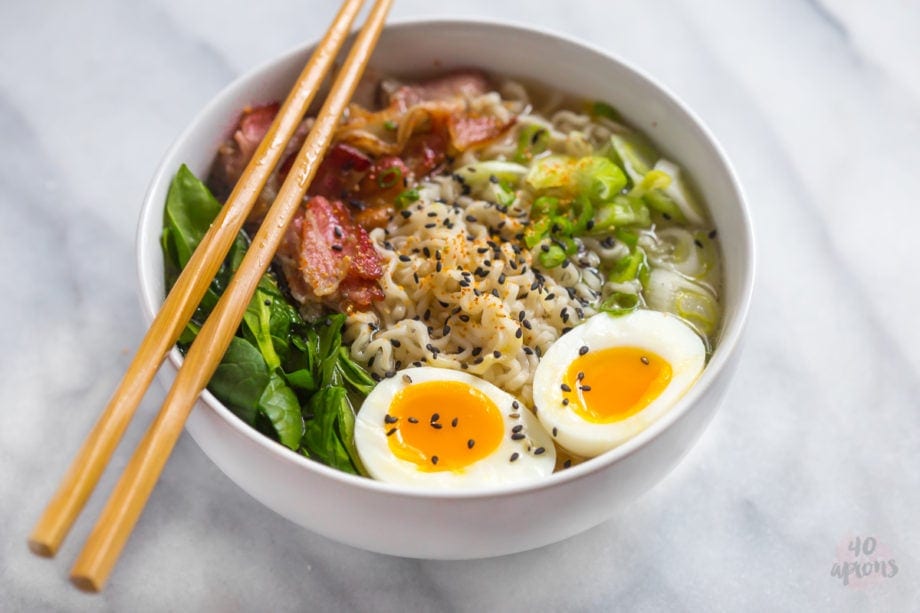
Are you trying to eat healthier for 2016? Well.. then, sorry. This recipe ain’t for you.

My love for ramen started precociously, sitting at my third-grade desk in Phoenix, breaking up the deep-fried-and-freeze-dried once-were-noodles in their little cellophane bags, sprinkling the MSG-laden powdered flavor packet (this was, of course, before they were used as currency in Litchfield prison) on top of the little crunchy bits, shoving them in my face and shivering maniacally from a sodium high. I’m pretty sure I wrote a poem about it.. almost positive.

I pressed paused on my obsession with the noodles for another 18 years or so, until I found myself with a major celebrity crush.. on, yep.. you guessed it! Liam Hemsworth David Chang.
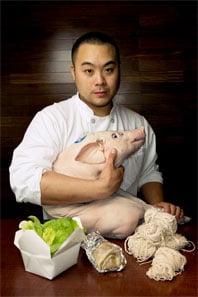
This David Chang. That’s right, people. On my “list”, sandwiched in between Clay Matthews and Benedict Cumberbatch (I had to super white-girl in there somewhere, you knew that.). Comfortingly–or not so comfortingly–I don’t thing I’m alone, though, seeing as how “david chang wife” is what Google suggests I search next.
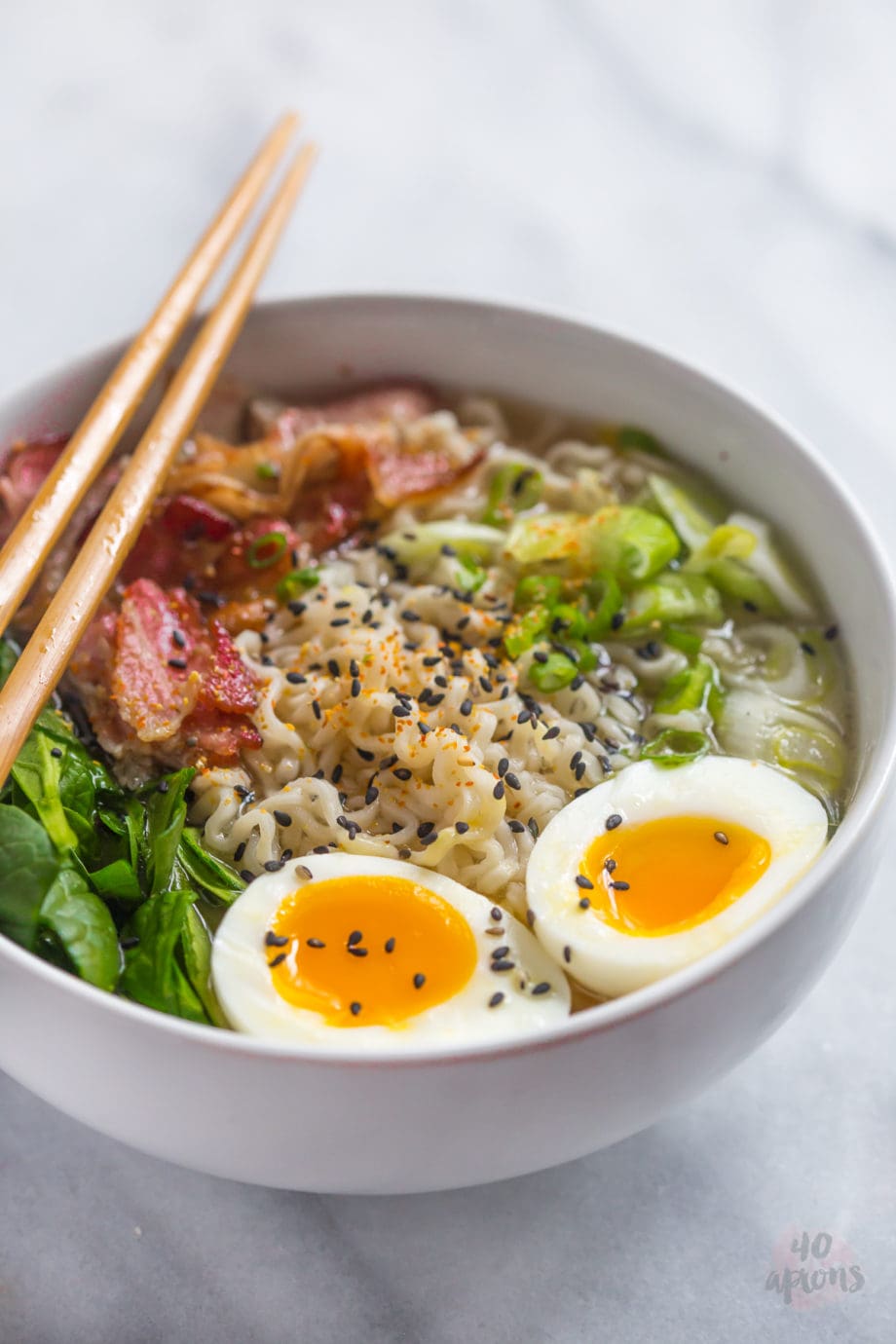
Anyway, as I blew through episode of episode of The Mind of a Chef a few years back, I fell madly in love–with my eyes and ears–with steaming bowls of rich tonkotsu, chewy noodles, perfectly creamy soft-boiled eggs, meltingly tender chashu pork. We live in Memphis, so we were without any real ramen joints at the time, and I waited with little patience as one of our favorite restauranteurs here built and opened a izakaya. So I decided to make tonkotsu from scratch, having never actually tasted it before, and $30 in pork bones and 12 hours later, I had my first bowl of the perfect broth–ah! So rich, a little salty, full-bodied, it was love at first slurp. A loaded bowl of tonkotsu sounds good to me for just about any meal and was actually what I requested for dinner the day Leo was born! But making it at home is such a process.. one for which I have little patience anymore. And besides, if it doesn’t turn out amazingly well, you’re already so invested, you might just shed a couple tears (in theory……).
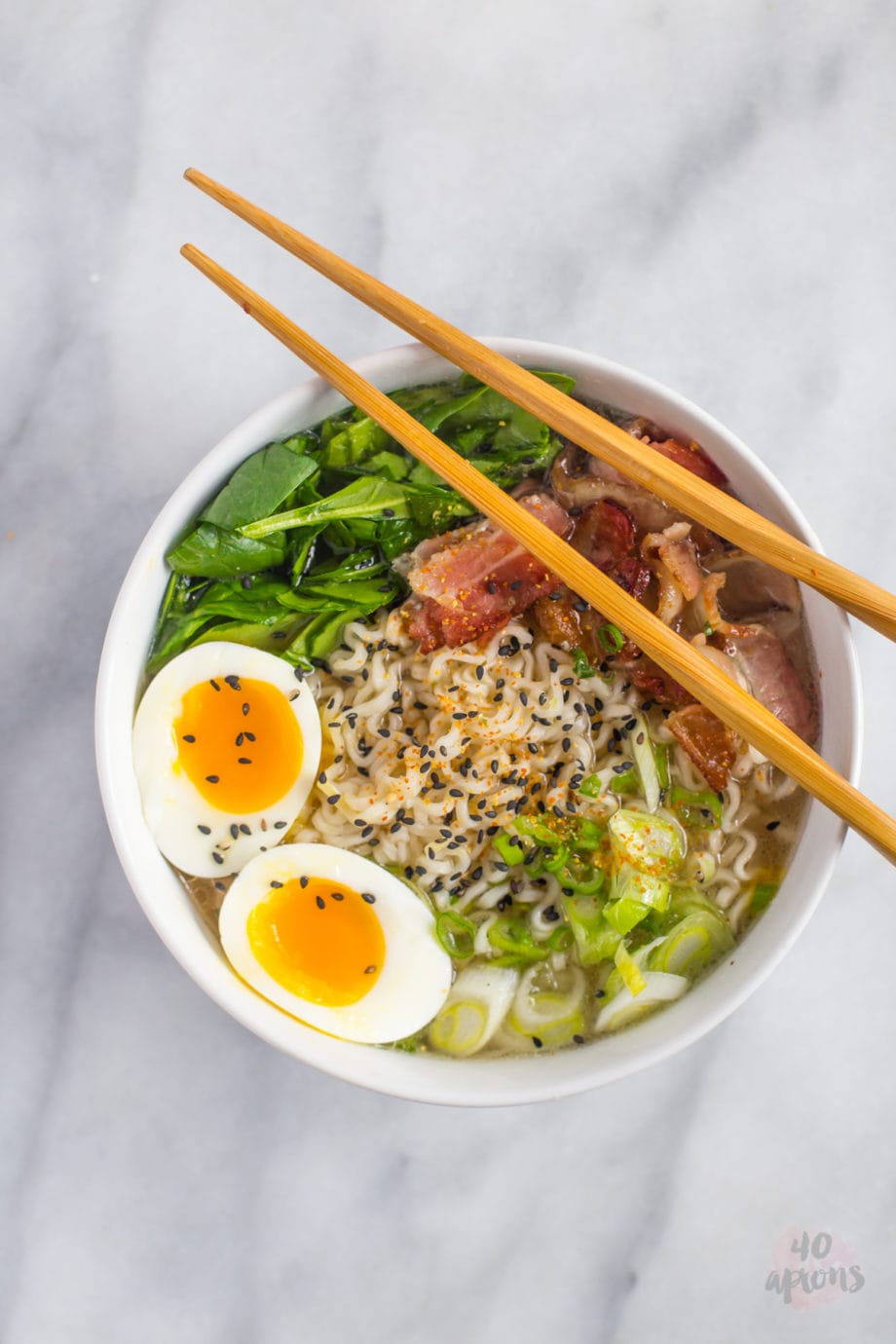
So I decided to combine two concepts gleaned from Chef Chang–the emulsification of fat in water that essentially makes a tonkotsu broth (and why it’s milky and not clear) and the use of bacon in infusing flavor to broths. Chang makes a rowdy bacon dashi, but I decided to take it one step further and essentially emulsify the bacon fat in water to mimic the richness of a tonkotsu in a fraction of the time.

The resulting broth is rich and smoky and salty, but not overly so on any of those profiles. The noodles absorb the flavor, the soft-boiled egg yolk offers a creaminess that I simply can’t (and won’t!) get over, the sautéed used bacon is surprisingly tender. It comes together quickly and is so, so satisfying. Don’t think that it’s too “bacony” either–it really isn’t! You can really dooty (yep) it up here, too, adding whatever sounds good and that you have on hand. At our ramen joint, I often load my bowl up with kimchi, spinach, bamboo shoots, pickled ginger, shiitake mushrooms, corn.. and at home with tofu, fresh mushrooms, and any veggies we have on hand.
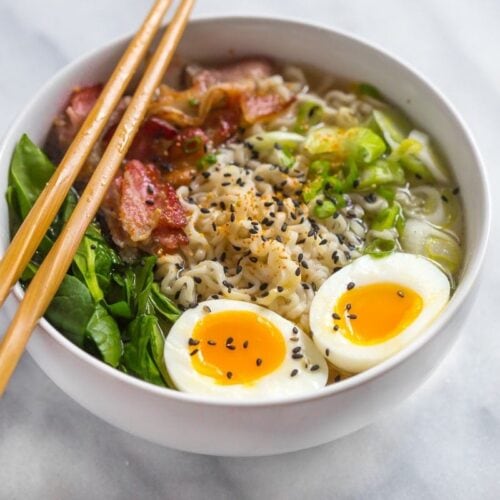
Bacon Ramen
Ingredients
- 4 cups water
- 2 cloves garlic peeled and smashed
- 3 ¼ slices ginger peeled
- 6 slices bacon
- 2-3 tablespoons oil for frying
- 2 tablespoons soy sauce
- 1 tablespoon mirin
- salt to taste
- 2 packages ramen noodles from dry, fresh, or frozen, cooked according to package
- chopped fresh spinach to serve
- togarashi Japanese spice blend, to serve
- green onions sliced, to serve
- soft-boiled eggs
- black sesame seeds to serve
Instructions
- Combine water, garlic, ginger, and bacon in a medium saucepan over high heat. Bring to a boil and reduce heat to a strong simmer/low boil. Let cook together for 30 minutes.
- Strain out aromatics and bacon and separate boiled bacon. Discard ginger and garlic. In a skillet over medium heat, add a glug of oil (vegetable, if you’re into that; olive; coconut–whatever, really, as long as it doesn’t have a very strong taste) and fry bacon until browned. Add salt to re-flavor your bacon. Remove from heat and slice into bite-size pieces.
- Add soy sauce and mirin to broth then salt to taste. Place noodles in serving bowl and ladle broth over. Garnish with desired toppings and serve.
- Soft boiled-egg, to serve. I follow this method but cook about 6 minutes instead of 9. Click here.
Approximate Information for One Serving
Nutrition Disclaimers
Number of total servings shown is approximate. Actual number of servings will depend on your preferred portion sizes.
Nutritional values shown are general guidelines and reflect information for 1 serving using the ingredients listed, not including any optional ingredients. Actual macros may vary slightly depending on specific brands and types of ingredients used.
To determine the weight of one serving, prepare the recipe as instructed. Weigh the finished recipe, then divide the weight of the finished recipe (not including the weight of the container the food is in) by the desired number of servings. Result will be the weight of one serving.
Did You Make This Recipe?
Tag @40aprons on Instagram and be sure to leave a review on the blog post!
Never Miss A Meal!
New Recipes Straight To Your Inbox
A curated selection of our most recent recipes, delivered straight to your inbox once a week.


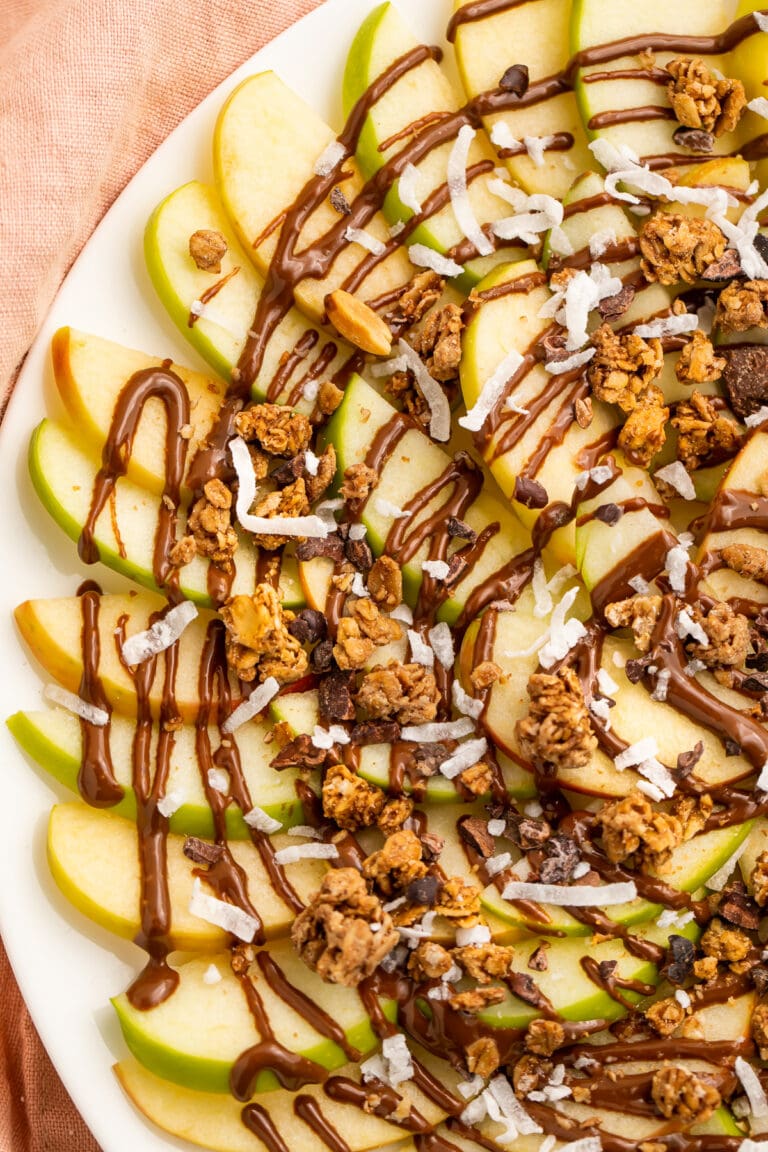
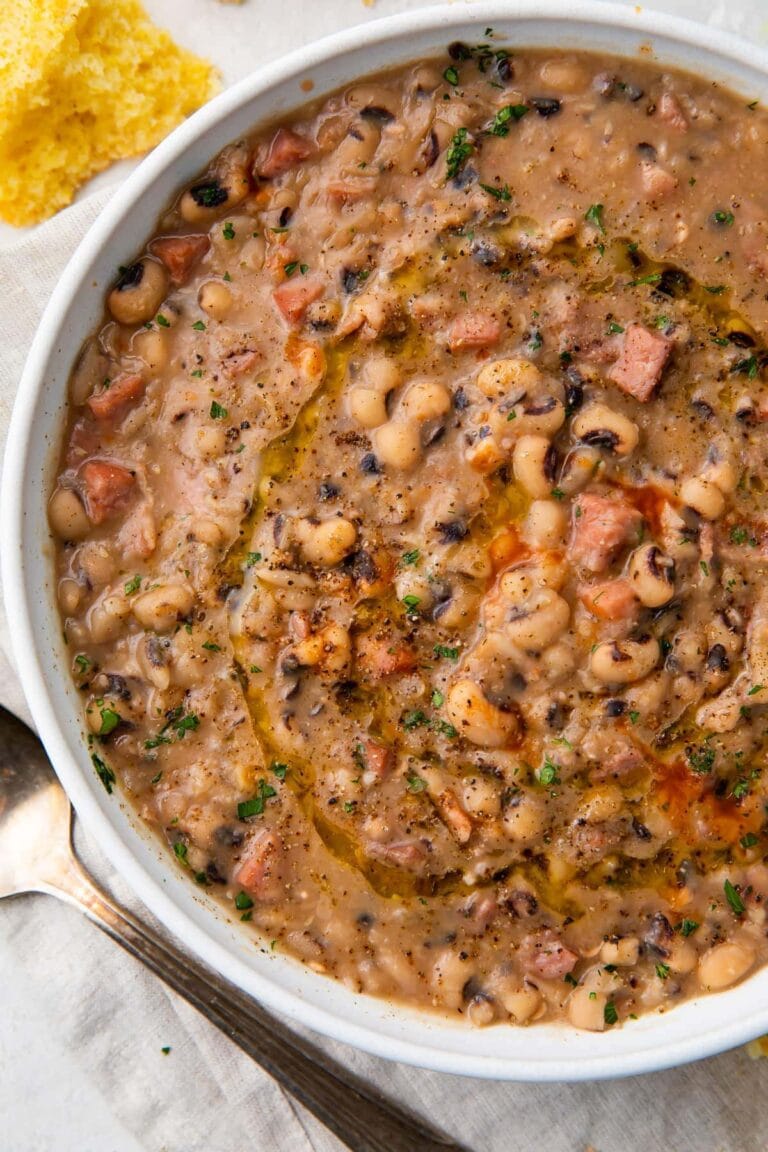













AMAZING!
So glad you enjoyed it!
I can’t wait to try this recipe, but I gotta be that pedantic little twit. It’s tonkotsu broth, not tonkatsu. Tonkatsu is a type of Japanese breaded porkchop.
Thanks for catching that!